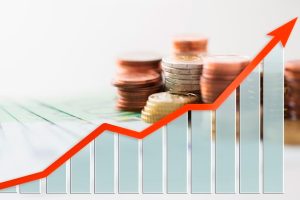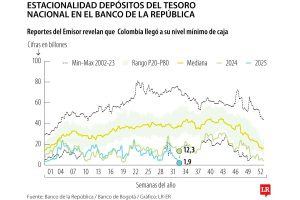Swelling federal debt could spell trouble for markets and the economy. How can investors prepare?
Long-term interest rates continue to rise—and it’s not just because the Federal Reserve could keep rates higher for longer.
The 10-year Treasury yield, which affects other borrowing costs such as rates on mortgages and corporate loans, has continued a monthslong ascent. Just last week, it hit the 5% mark for the first time in 16 years.
Treasury yields are driven in part by Fed rhetoric, and recent hawkish signals from the Fed in response to a stronger-than-expected economy and a still-tight labor market have indeed contributed to a move higher in yields. However, there’s another important factor driving yields higher: Investors’ growing concerns about the sustainability of the U.S. government’s debt mean that they are demanding greater reward for purchasing this debt. This, in turn, puts upward pressure on rates, which is important because higher rates tend to weigh on bond and stock valuations alike.
The Outlook for U.S. Debt
Such pressures may not abate anytime soon. The U.S. continues to borrow to fund its spending, issuing government bonds into the global financial system, which already is oversupplied with U.S. Treasury bonds. As a result, the federal debt grows ever larger.
The danger is that higher rates may create a vicious cycle for U.S. deficits, which are the difference between what the U.S. government takes in and what it spends. If rates remain elevated, the U.S. will continue paying more to finance its debt, making it ever more difficult to reduce its deficits.
Here are three risks that warrant particular attention from investors today:
- The current federal debt pile is already massive, at more than $33 trillion, a staggering post-WWII high representing 122% of gross domestic product (GDP). A recent Treasury report showed the government spent $659 billion in net interest payments during the fiscal year that ended in September—about 39% more than the same period in the previous year. The Congressional Budget Office estimates this interest expense could double in the next decade, meaning that the U.S. government might be spending more on interest payments than on other major budget categories such as defense. Growing national debt can not only raise borrowing costs for everyone, it could also crowd out funding for other priorities.
- Supply and demand may be increasingly mismatched in the Treasury market. A recent surge in Treasury bond issuance—to help the government finance its swelling deficits—has been met with a surprising dearth of buyers. Some of the biggest buyers of Treasuries, including domestic commercial banks and foreign governments, have been reducing their purchases.
- Geopolitical conflict in both the Middle East and Ukraine means more federal outlays may be required to aid U.S. allies and humanitarian goals, potentially driving further government bond issuance. Also, geopolitical instability and wars historically have impacted oil and commodity prices and affected global supply chains, potentially adding to inflation pressures. These developments are playing out against the backdrop of palpable dysfunction in Washington, which may further undermine investor confidence in the government and its bonds.
Cautions for Investors
Growing debt, reduced demand in the Treasury market and geopolitical conflict are all factors that could add pressure to the cost of borrowing. This in turn can weigh on consumer and business spending, overall economic growth and financial markets.
While bond investors seem to understand these risks and are demanding greater reward for investing in Treasuries, equity investors appear to be shrugging off such concerns, instead banking on sunny days ahead and expecting improved corporate earnings in the third quarter. The valuation of the S&P 500 Index, for instance, remains near historically high levels, with a forward P/E ratio between 18 and 19.
With this in mind, Morgan Stanley’s Global Investment Committee suggests investors consider moderating significant over-weight stock positions to account for the risks of a structurally higher cost of capital. Remember, although interest rates may not rest at their current elevated levels, they are still likely to be higher over the long term than the ultra-low levels that supported lofty equity valuations during the decade or so following the 2007-08 financial crisis.
Lastly, given the uncertainty around the economy and potentially persistent inflation, it may make sense to add to positions in “real” assets, such as gold, commodities, infrastructure, energy transport and non-commercial real estate. These can serve as a portfolio hedge for a “stagflationary” environment of weakening economic growth and accelerating inflation.






